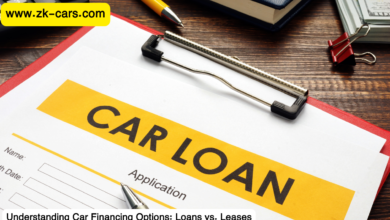What to Look for When Buying a Used Car

Buying a Used Car can be a smart financial decision, but it requires careful consideration to ensure you get a reliable vehicle. Here’s a comprehensive guide to help you navigate the process and make an informed decision.
What to Look for When Buying a Used Car
1. Do Your Research
Before you start visiting dealerships or private sellers, do your homework. Research the models you’re interested in, their common issues, and their market prices. Websites like Edmunds, Kelley Blue Book, and Consumer Reports provide valuable insights and price comparisons.
2. Check the Vehicle History
A vehicle history report is crucial. It provides information about the car’s past, including any accidents, title issues, and previous ownership. Services like Carfax and AutoCheck can help you obtain this report using the car’s VIN (Vehicle Identification Number).
3. Inspect the Exterior
When inspecting the car, look for any signs of damage or rust. Check for mismatched paint, which could indicate previous repairs. Examine the tires for wear and ensure they have even tread. Look at the body panels for gaps, which might suggest the car has been in an accident.
4. Inspect the Interior
The interior condition can tell you a lot about how well the car has been maintained. Check for any tears, stains, or unusual odors. Test all the electronics, including the air conditioning, heater, and infotainment system. Ensure all knobs and switches are functioning properly.
5. Check Under the Hood
Even if you’re not a mechanic, you can still perform a basic inspection under the hood. Look for any signs of leaks, corrosion, or worn belts and hoses. Check the oil and transmission fluid levels and their condition. A well-maintained engine bay is usually clean and free of debris.
6. Take a Test Drive
A test drive is essential to assess the car’s performance. Pay attention to how the car handles, brakes, and accelerates. Listen for any unusual noises and check the visibility from all angles. Test the car on different road conditions to get a comprehensive feel for its performance.
7. Get a Pre-Purchase Inspection
Consider having a trusted mechanic inspect the car before you buy it. They can identify potential issues that you might miss. This inspection can save you from costly repairs down the line and give you peace of mind about your purchase.
8. Negotiate the Price
Use the information you’ve gathered to negotiate a fair price. Be prepared to walk away if the seller isn’t willing to meet your offer. Remember, there are plenty of used cars available, so don’t feel pressured to settle for a deal that doesn’t meet your expectations.
9. Review the Paperwork
Ensure all the paperwork is in order before finalizing the purchase. This includes the title, bill of sale, and any warranties or service records. Verify that the VIN on the paperwork matches the VIN on the car.
Conclusion
Buying a used car requires diligence and attention to detail. By following these steps, you can ensure you’re making a smart investment and getting a reliable vehicle. Happy car hunting!




